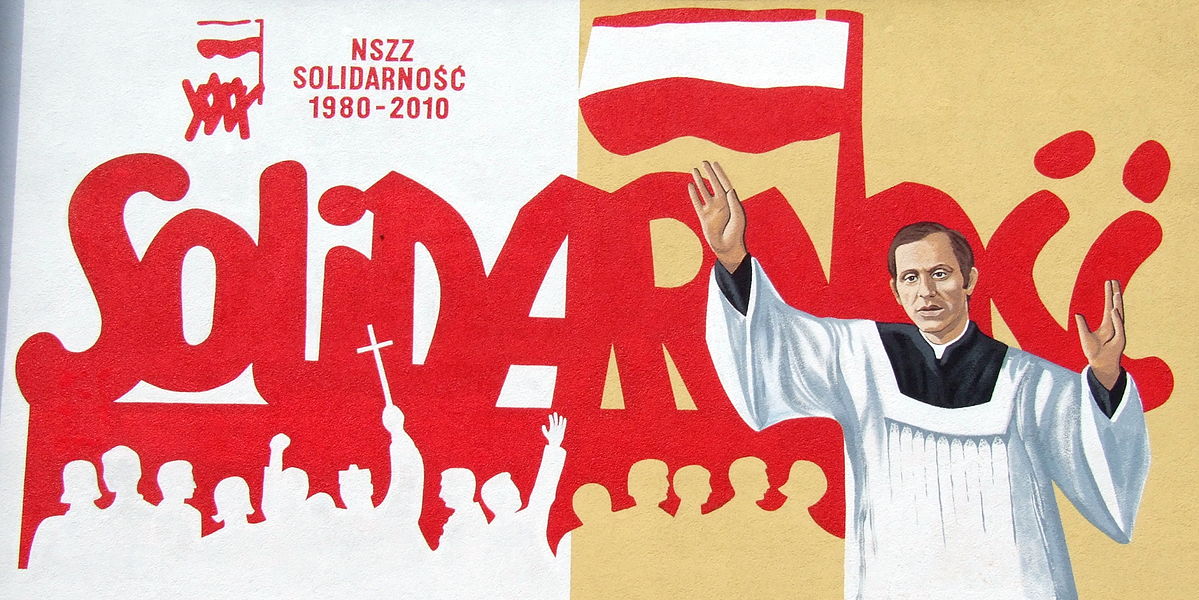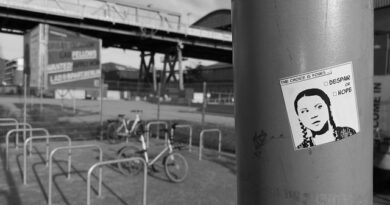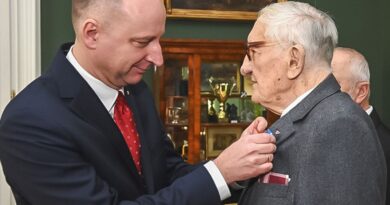The Miracle of “Solidarity”: how Poles broke the Communist chain

For some, the miracle started in July 1980 in Lublin, where the first strike broke out during that eventful summer. It was even rumored that the strikers welded a train full of scarce goods to its tracks to prevent it from traveling to the Soviet Unions.
Marek Jan Chodakiewicz
Others point to the Olympic pole vault champion Władysław Kozakiewicz. In early August, despite the massively derisive booing by the Soviet spectators, he took the gold in Moscow, and, to boot, flipped off “the Ruskies,” Italian style, live on Polish TV. That surely sent a triumphant shiver down the spine of ever patriot in Poland.
Now, seriously, all agree that August 14 was an important date, as the strike at the Gdańsk shipyard commenced then. That definitely was a miracle. Who was responsible for this? The adherents of the school of The Great Man in History point to Lech Wałęsa, who appeared among the strikers soon after. However, the conspiracy theorists believe that the man with a moustache was sent to the shipyard by the secret police, directly or indirectly. If he had been, the strike he headed surely did not go the secret police way.
Others stress that Wałęsa was dispatched to the shipyard by dissident intellectuals, Bogdan Borusewicz in particular. This school also holds that it was the leftist intelligentsia who mainly prepared the field for “Solidarity,” nay, practically created it. One of them, Professor Karol Modzelewski, even invented its name. There is disagreement here, of course.
One can point out that it was a high-school drop out, blue-collar worker, and a co-founder of the Free Trade Unions of the Baltic Coast, Krzysztof Wyszkowski, who put out the shipyards strikers’s newssheet, dubbed “Solidarity”, before it was adopted as the union’s official name. As for the intellectuals, the credit usually goes to the leftist part of the Committee to Defend Workers (KOR). However, the leading light of the KOR-left, Jacek Kuroń, admitted that had he not been arrested in Warsaw, he would have reached Gdańsk to advise the strikers not to demand a free trade union.
The legend of the leftist intellectual/advisor is so powerful that one often overlooks the fact that the logistical support for the striking shipyard workers in printing, transportation, communications was provided by the youthful activists of the neo-nationalist Movement of Young Poland (RMP). They were staunchly Christian and mildly rightist.
Be that as it may, “Solidarity” was born and Wałęsa became a powerful symbol for the strikers and, soon, for his nation and the world. Many rallied around him and identified with him, a miracle, believe it or not.
For the record, even if there is no consensus about the Great Man at the shipyard, there certainly was a Great Woman there: The nurse Alina Pieńkowska saved the strike by audaciously barring the way out to the would-be strike-breakers and publicly shaming them, as they were about to accept a compromise with the Communists and leave the shipyard, essentially ending the protest. That would have meant a disaster to tens of thousands of Polish workers who had by then struck in solidarity with Gdańsk.
By August 30, 1980, the strikes spread like wildfire all over Poland. For those who claim that the miracle rests with the people, who rose against the oppressor, that is proof supreme of a miracle. Naturally, there are competing theories about the nature of the “people power” miracle. The Trotskites claim that “the proletariat,” yearning for “true socialism,” rebelled against the Communist party bureaucracy. Other leftists and liberals believe that the workers wanted to reach democratic socialism carefully chaperoned by the intellectual advisors.
And nationalists argue that, as evidenced by religious portraits of the Black Madonna and the Pope and other ubiquitous public displays of Christian piety, the strikers wanted “a Catholic Poland and not a Bolshevik one.” They wanted freedom from Communism, independence from the Soviet Union, and national solidarity, a system akin neither to Marxism nor to capitalism but, rather, related to the doctrine of subsidiarity and the nationalist-syndicalist Third Way. It was certainly a miracle for the people of Poland, atomized after 35 years of totalitarianism, virtually lacked a vocabulary in common. Instead, they communicated in religious and patriotic symbols, including most often the Cross-cum-Anchor, the anti-Nazi and anti-Communist underground sign of Fighting Poland (1939-1945).
How about the miracle of the collapse of the Communist resolve and the Politburo disunity? After all, it was supremely propitious that a faction of the leadership decided to take advantage of the strikes to oust the Old Guard under Edward Gierek. Had the Communists been united, “Solidarity” would have been crushed in its cradle. Likewise, it was a miracle that the Soviets did not invade.
However, almost everyone is equally convinced that the miracle manifested itself first in October 1978, when Karol Wojtyła became Pope John Paul II, and germinated in June 1979, when the Pontiff visited his native Poland. His message was: “Fear Not.” And the barrier of fear slowly began to crumble. “Solidarity” was born a year after.
It persevered despite the painful blows inflicted upon it the Communists during martial law and its aftermath (1981-1989). This was not only thanks to the unconquerable spirit of the Poles but also in large degree of the moral and material support from the Pope and the West, in particular the United States under President Ronald Reagan. The American support was both public and private. For example, the head of the CIA William Casey, after visiting the Pope to talk about the crisis in Poland, donated $50,000 of his own money to buy printing equipment which was subsequently smuggled into Poland via the Vatican channels. That was before the Congress voted its generous aid package to “Solidarity.” Yes, the American people and some of their elected and appointed representatives instinctively knew a miracle in the making when they saw one.
Of course, the historian will consider all the factors above to recreate the past as it really was. Further, a good historian will appreciate the miraculously non-violent character of “Solidarity.” At the same time, a solid scholar will be able to draw a straight line between “Solidarity” and Poland’s many modern rebellions: the Bar Confederacy (1768), the May 3rd Constitution War (1792); the Kościuszko Insurrection (1794), the November Rising (1830-31), the January Rising (1863); the Great Poland and Silesian Risings (1918-1921); the all-Polish “Tempest” and the Warsaw Rising (1944); the anti-Communist Rising (1944-1949); and the Poznań Rising (1956). All of them failed. “Solidarity” ultimately prevailed, albeit after a painful string of defeats. It was surely a miracle, or a chain of miracles.
Last but not least, I would like to share a family story to prove my point. On September 1, my father walked into a secret police ambush at a friend’s house. My father was an underground printer and had enough material with him to supply an entire city block. The Communist secret policemen arrested him and conveyed him to a regular police station, where he was put in a holding tank. The secret policemen left, vowing to return later to transfer the prisoner to their own headquarters. They were hoping to catch other people. Watching TV news showing the signing of the “Solidarity” agreements between the regime and the strikers, the regular cops allowed my father a single phone call, against all regulations of course for the political prisoners had no privileges. He called my mother to ask her for a toothbrush and toothpaste. My mother came soon and started crying. The regular cops became embarrassed. A sergeant scratched his head: “Well, if an agreement was signed, guaranteeing a free trade union, then I guess you are all right to go.” And they let my father go. A small miracle of “Solidarity”.
This article was written in 2005. We thank prof. Marek Jan Chodakiewicz for cooperation in publishing this text.


